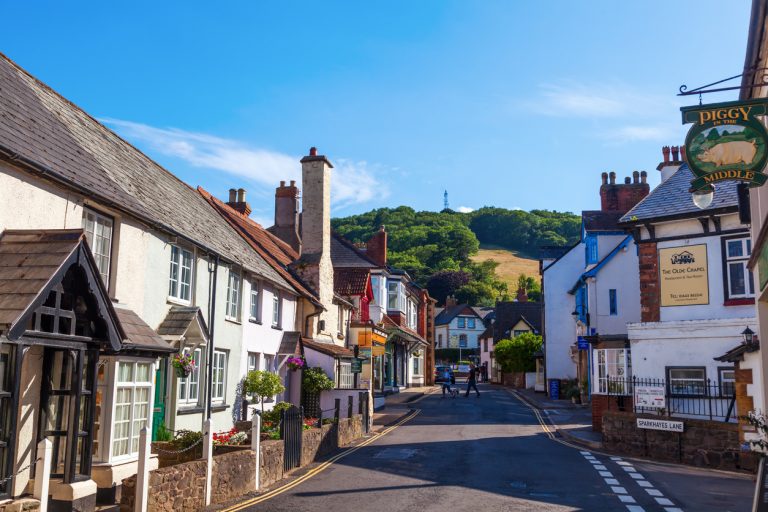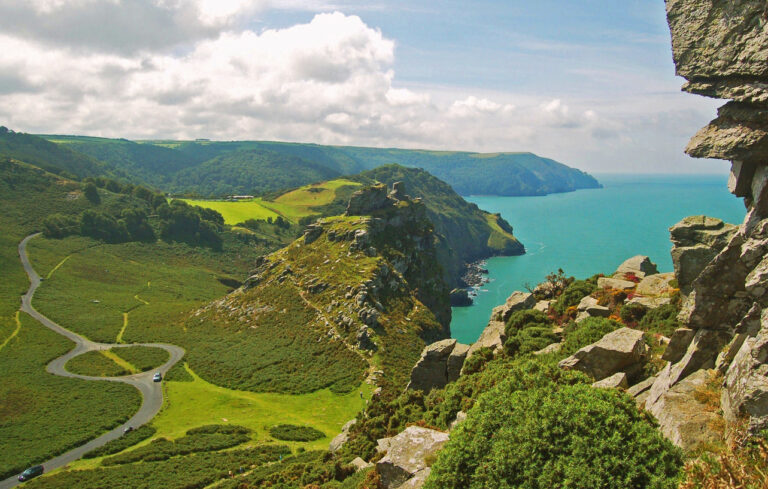Why did Romans settle in Bath?
While Bath is often more associated with its Georgian history, its Roman roots are everywhere you look.
But why did they first come here and stay for a few centuries?
Here’s what you need to know!
Natural hot springs

It largely all comes down to Bath’s natural hot springs.
The Romans were renowned for their engineering prowess and appreciation of bathing culture – and they were drawn to locations with natural resources that could support their needs and interests.
In 43 AD, the Roman Empire began its conquest of Britain under Emperor Claudius, expanding its influence and establishing settlements across the island.
By 60-70 AD, the Romans had reached what is now Bath, then known as Aquae Sulis, and they quickly recognised the potential of its unique thermal springs!
These hot springs are the only naturally occurring thermal waters in the United Kingdom and they produced mineral-rich waters that bubbled up from deep beneath the earth.
The Romans believed in the healing properties of such waters and were keen to capitalise on this natural resource.
They constructed a complex system of baths, which included a large communal bathing area, a series of pools with varying temperatures and a sophisticated heating system known as a hypocaust.
These baths were not only centres for relaxation and health but also played an important social role in Roman life – they served as places for socialising, conducting business, and even political discussions!
Religious Significance
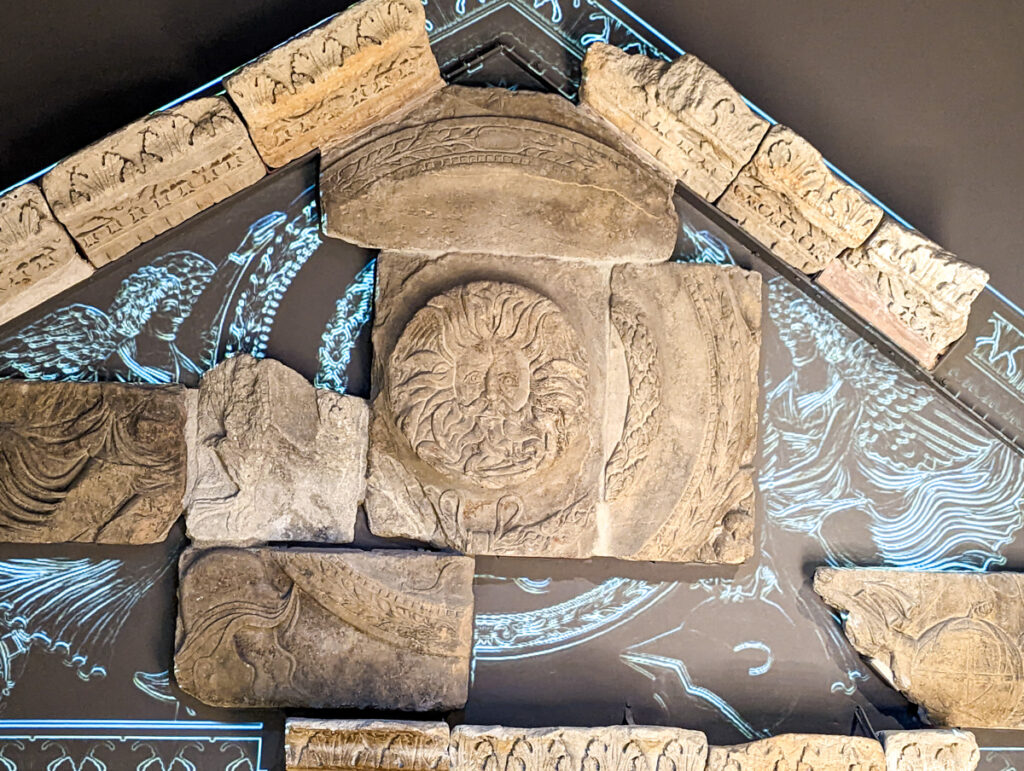
The baths were also considered sacred by the local Celtic tribes long before the Romans arrived.
The Celts worshipped a goddess named Sulis, whom they believed to be the guardian of the springs and a healer.
Understanding the importance of local religious beliefs, the Romans merged their worship of the goddess Minerva with that of Sulis, creating a syncretic deity, Sulis Minerva.
To honour this goddess and to attract both the local population and Roman settlers, the Romans constructed a grand temple dedicated to Sulis Minerva alongside the baths.
The temple complex became a significant pilgrimage site, drawing people from across the Roman Empire who sought healing from the sacred waters.
Strategic location
Bath had strategic significance within Roman Britain.
It was in the southwest, but still ideally placed along the Roman road network – this was essential for maintaining control and communication across the empire.
The Fosse Way, one of the most important Roman roads in Britain, ran close to Bath, connecting the city directly to other major Roman settlements such as Londinium (London) and Corinium (Cirencester).
Bath’s river also provided a natural transport route that was used for moving goods and people in and out of the settlement.
They transported heavy materials, such as building stones and timber, along the river.
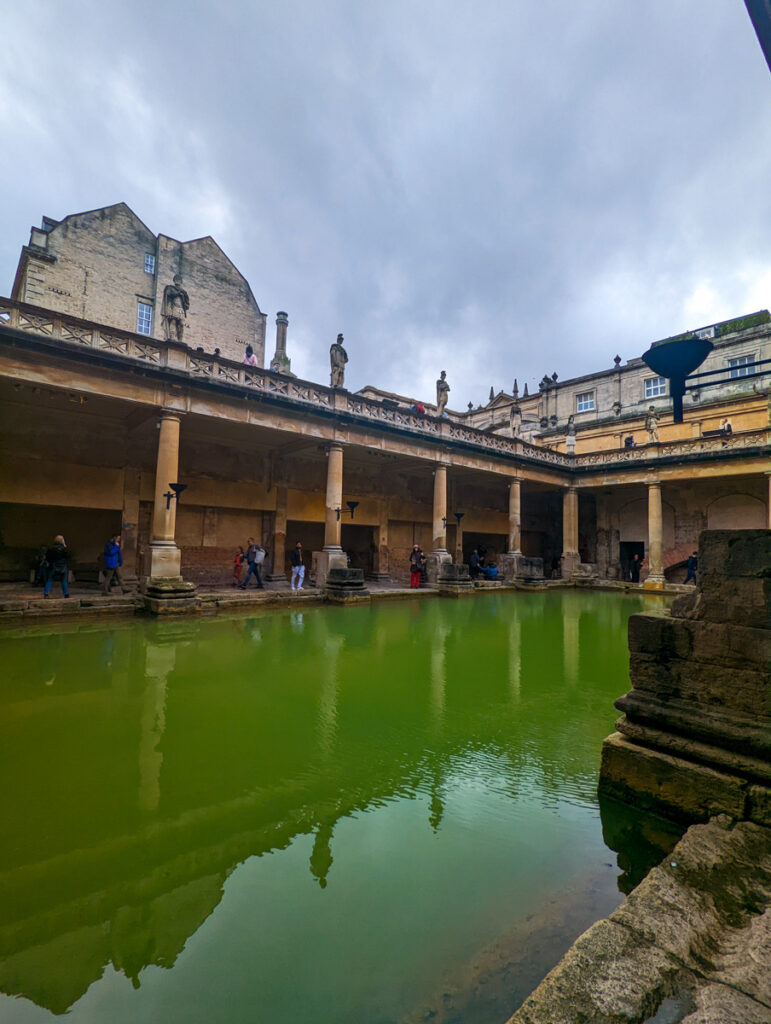
Economic Benefits
The economic vitality of Bath during Roman times was significantly bolstered by its status as a centre for pilgrimage and healing.
The thermal springs and the temple dedicated to Sulis Minerva attracted visitors from across the Roman Empire, who sought the healing properties of the sacred waters!
These pilgrims believed that the goddess Sulis Minerva had the power to cure ailments and provide divine blessings, making Bath a destination for those in search of both physical and spiritual relief.
The influx of pilgrims contributed to the local economy in multiple ways. The continuous stream of visitors required accommodations, food, and services, leading to the growth of inns, taverns and markets around the city.
Local artisans and merchants also benefited from selling goods such as religious offerings, souvenirs, and necessities to the visitors.
Local economy and growth
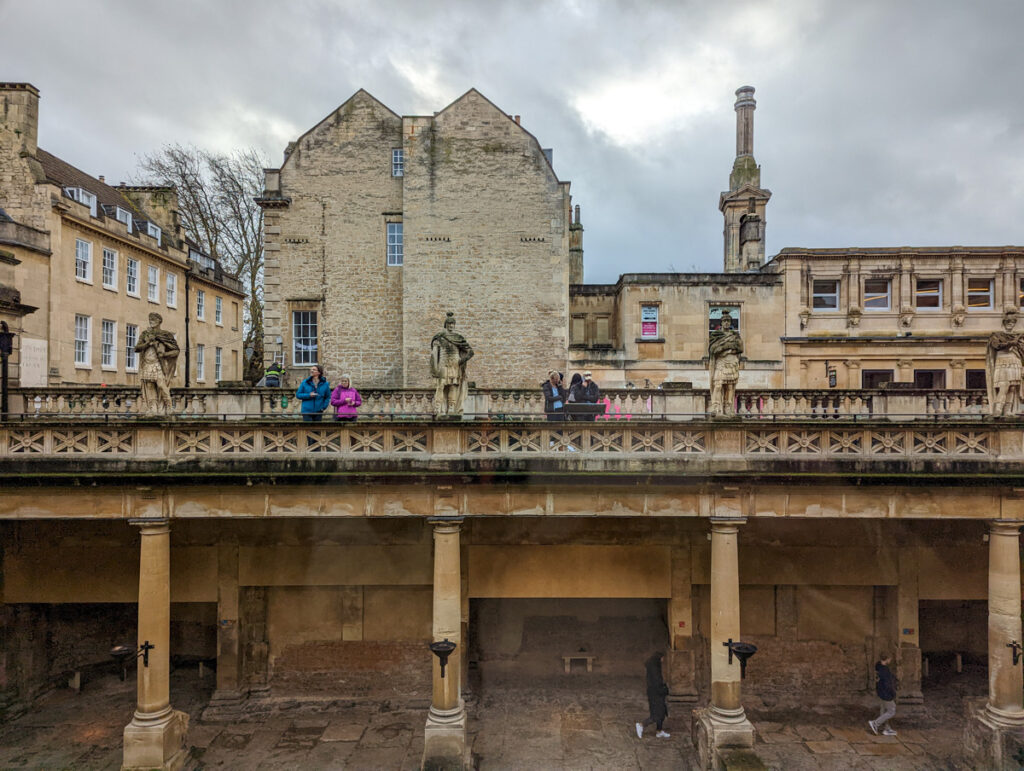
Beyond pilgrimage, the establishment of the Roman baths and the associated infrastructure contributed to the economic development of Bath.
The construction and maintenance of the baths, temples, and public buildings created jobs for local labourers, craftsmen and engineers.
The demand for building materials such as stone, lead, and timber also stimulated the local and regional economies, with nearby quarries and forests providing resources for the growing settlement.
The economic benefits of the Roman settlement in Bath extended beyond the immediate area, which influenced trade and commerce in the surrounding regions.
The success of Bath as a religious and social hub ensured its prominence in Roman Britain, with its economic impact felt long after the Romans departed in the early 5th century AD.
If you’re interested in visiting the Roman Baths in Bath, here’s my full guide.





